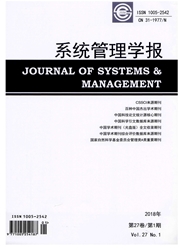

 中文摘要:
中文摘要:
与方差风险测度相比,下偏矩一方面能够度量下边风险,另一方面通过设置不同的风险因子它可以更广泛的反映投资者的风险偏好。Harlow[1]建立了基于历史数据的均值下偏矩最优投资组合模型,本文考虑建立预测数据下的均值下偏矩最优投资组合模型,并同Harlow的模型进行实证比较。考虑到实际收益数据的时变性、杠杆效应和厚尾特征,引入AR(1)-GJR(1,1)-EVT模型来描述金融时间序列的上述特征,并通过t Copula函数描述资产收益之间的非线性相关性。对基于历史数据的均值-二阶下偏矩模型和基于预测数据的均值-二阶下偏矩模型的投资绩效进行考察。中国股市的实证结果表明,基于预测数据的均值二阶下偏矩模型可以得到更好的投资绩效。
 英文摘要:
英文摘要:
LPM is a downside risk measure,and can characterize different downside preferences,so it is a "respectable" risk measure in the portfolio optimization problem.Harlow analyses a mean-LPM portfolio selection model using realized data.In this paper,we analyze the problem using predicted data.To account for the time variation,leverage effect and fat-tails in the financial time series,we introduce the AR(1)-GJR(1,1)-EVT model to model the marginal distribution of individual asset.The t Copula is used to model the nonlinear dependence structure between assets.The empirical study based on China stock markets shows that the mean-lower partial moment model yields a better performance if the predicted data instead of realized data are used.
 同期刊论文项目
同期刊论文项目
 同项目期刊论文
同项目期刊论文
 Efficiency of crude oil futures markets: New evidence from multifractal detrending moving average an
Efficiency of crude oil futures markets: New evidence from multifractal detrending moving average an Oil price shocks and stock market activities: Evidence from oil-exporting and oil-importing countrie
Oil price shocks and stock market activities: Evidence from oil-exporting and oil-importing countrie Forecasting energy market volatility using GARCH models: Can multivariate models beat univariate mod
Forecasting energy market volatility using GARCH models: Can multivariate models beat univariate mod Energy prices and exchange rates of the U.S. dollar: Further evidence from linear and nonlinear caus
Energy prices and exchange rates of the U.S. dollar: Further evidence from linear and nonlinear caus 期刊信息
期刊信息
